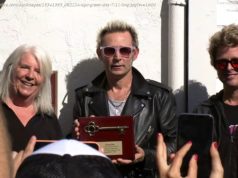Linda Ronstadt, retired from pop music after Parkinson’s diagnosis in 2013, just released her first live album, “Live in Hollywood,” a concert from 1980’s “Mad Love” tour that originally aired on HBO.
In some notable ways, singer Linda Ronstadt’s life has come full circle.
In the coming weeks, Ronstadt, 72, is about to embark on a cultural exchange program in which she’ll take a group of 20 young Mexican-American students to northern Mexico to study traditional music, instruments, singing and dancing, and visual arts, she said in a telephone interview from her San Francisco home.
This is where Ronstadt, as a little girl born and raised in Arizona, learned to sing, tapping into her family background.
Dad was Gilbert Ronstadt, a prosperous rancher with a fine singing voice who was of Mexican, German and English ancestry. He introduced Ronstadt and her three siblings to the rancheras, huapangos and mariachi forms of Mexican folkloric music. Mom, Ruth Mary, of German, English and Dutch ancestry, introduced Ronstadt to the standards.
Her maternal grandfather, Lloyd Copeman, invented the early toaster, the first electric stove and the rubber ice tray, for which he made millions. Her paternal grandparents hailed from the same small town in Mexico Ronstadt plans to take the kids.
At 10, the same age as these kids, she started singing those songs.
At 72, she can no longer sing. The woman who had one of the purest pitches and among the most powerful voices in popular music history, and who inspired generations of female pop and country stars, has Parkinson’s. She gave her last concert in 2009, when she wondered why her instrument wasn’t doing what had come naturally for so long.
A few years later, when she was about 67, doctors confirmed she had Parkinson’s disease — more specifically, she says, progressive supernuclear palsy. The brain cells disorder affects movement, which means walking and balance, speech, swallowing, vision, and controlling the muscles that let singers sing, can be compromised.
But she’s still involved in music. It’s just a bit different from the 1970s when, in 1978, US Weekly proclaimed Ronstadt, Joni Mitchell, Stevie Nicks and Carly Simon the “Queens of Rock.” A time when she sold so many records through No. 1 albums like “Heart Like a Wheel” and “Simple Dreams,” her label, Asylum, practically came to rely on Ronstadt and her former backing band, the Eagles, to keep the company a mega corporation.
“The record business has changed so much it’s really amazing. I’m involved with music now more as a mentor,” she said of her work with the children.
It’s a mutual learning experience, says Ronstadt, who recorded two albums of Mexican music — “ Canciones de mi padre” in 1987, the most commercially successful non-English language record in U. S. music history, according to the RIAA, and its 1991 sequel, “Mas canciones.”
“I go to the original sources. If someone says, ‘I like your music I say listen to Lola Beltrán, the singers I learned from. It was really hard to sing. I heard it as a child and the rhythms are very complex. What I learn from these kids is I get to hear these complicated rhythms and they are better than I am and they are 10-years-old.”
Ronstadt, of course, has always been self-critical. She’s no fan of “Linda Ronstadt.






